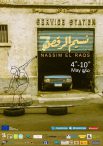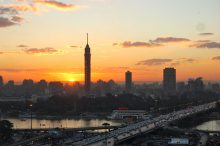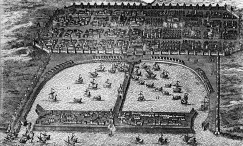Category: ALEXANDRIA
-

Alexandria Aligned to the Rising Sun
According to a new research, the ancient city of Alexandria may have been built around a solar event occurring during Alexander the Great’s lifetime. Researchers used simulation software to plot the rise of the sun for the day he was born. They found that the “King’s Star” Regulus, located in the head of the constellation…
-

Egypt Pours €360 Million into Renewing Alexandria’s Tram Network
Egypt is set to start the renovation and modernization of the prominent Al-Raml Tram network in Alexandria in a project that will cost €360 million. Egypt’s Ministry of Investment and International Cooperation signed a €100 million loan agreement with the French Development Agency (AFD), which will partially finance the project. The upgrading process of the 13.7 kilometers…
-

Dr. Mustafa Al Faqi, Director of BA
The Board of Trustees of the Bibliotheca Alexandrina (BA) chose on 11/5/2017 Dr. Mustafa Al Faqi as Director of BA. President Abdel Fattah El-Sisi approved the selection of Al Faqi for the post. He is successor to Ismail Serag Eddin, who has been the director of the library since its opening in October 2002. CV…
-

7th Edition of Nassim El Raqs
-

16 Killed in Bombing at St Mark’s Cathedral in Alexandria
A bomb has exploded near St. Mark Coptic Cathedral in Alexandria, just hours after another bombing at St George’s in Tanta. According to initial reports, the bomb struck outside the Cathedral, killing 16 people and injuring 41 others. Al-Ahram reports that a high-ranking police officer was killed when he intercepted a suicide bomber outside the Cathedral.…
-

Searching for Life Quality? Cairo, Alexandria Just Made It to Africa’s Top 10 Cities
According to a Swiss study published Tuesday, Egypt’s Mediterranean city of Alexandria comes third while the capital Cairo ranks seventh when it comes to quality of life in Africa. Surveying 100 capitals and major urban centres in Africa, the research body Communaute d’Etudes pour l’Amenagement du Territoire at the Federal Institute of Technology in Lausanne…
-

Mostafa el-Abbadi, Champion of Alexandria’s Resurrected Library, Dies at 88
Mostafa A. H. el-Abbadi, a Cambridge-educated historian of Greco-Roman antiquity and the soft-spoken visionary behind the revival of the Great Library of Alexandria in Egypt, died on Feb. 13 in Alexandria. He was 88. His daughter, Dr. Mohga el-Abbadi, said the cause was heart failure. Professor Abbadi’s dream of a new library — a modern…
-

Alexandria: locals adapt to floods as coastal waters inch closer
“Before we were flooded a couple of years ago, we didn’t imagine the water could reach this level,” said cafe manager Samir Gaber, gesturing at a cluster of tables overlooking the Mediterranean. Gaber has managed the Latino cafe in Alexandria for six years, during which time the business has had to adapt to increasingly dramatic…
-

The story of cities: how Alexandria laid foundations for the modern world
The secret to Alexandria, if classical historians are to be believed, lies in a golden casket. Studded with jewels and small enough to hold in one’s hands, the casket was a war trophy found in the lodgings of vanquished Persian king Darius III more than 2,300 years ago. The man who defeated Darius, Alexander the…
